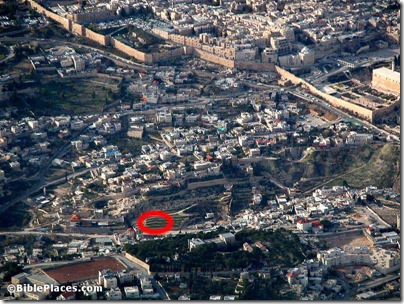When Tel Aviv University announced plans to excavate in Jerusalem’s City of David, some liberal voices responded with anger. What is the most liberal archaeological department in Israel doing working in an area associated with a history they deny? The apparent (but unconfirmed) funding of the dig by the conservative organization Elad grated all the more, for as the liberals know, the Bible-confirming results that come out of excavations in the City of David are controlled by these radical Jewish settlers.
More details about the planned excavations are now online. Yuval Gadot has posted his research plan for excavating on the eastern slope south of the Gihon Spring in Shiloh’s Area D3. He plans to excavate six squares in the first four-month-long season.
Gadot hopes to discover houses as well as the eastern wall of the city in order to address two questions: (1) How does household archaeology illuminate social order and cultural identity? (2)
What was the size and growth pattern of Jerusalem? In regard to the second question, Gadot wants to determine if the massive wall that Reich and Shukrun found in the Kidron Valley was a city wall or a revetment wall.
Before excavation begins, the archaeologists have to remove the dump of previous excavations. The area will be open to visitors and a 24-hour webcam will broadcast the work on the site.
HT: Joseph Lauer
Photo from Pictorial Library of Bible Lands

2 thoughts on “Research Plan Posted for New Jerusalem Excavations”
Is it considered possible that some of these excavations will involve 10th Century ruins from the time of David? I only saw as far back as the 8th Century.
It's certainly possible. But I wouldn't expect much given:
1. The location low on the slope was likely outside the settled area of Jerusalem in the tenth century.
2. The difficulty of identifying 10th century pottery as distinct from 9th century pottery.
3. The relative paucity of evidence from Jerusalem from the 10th century, possibly owing to a lack of destructions in the following centuries.